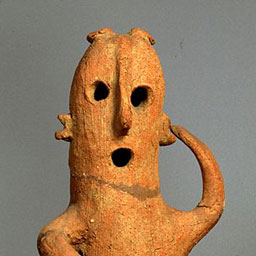xkcd: Coordinate Precision but pi (π)?
I tried looking for some answer but found mostly
- People reciting pi
- People teaching how to memorize pi
- How to calculate pi using different formula
- How many digits NASA uses
Update question to be more specific
In case someone see this later, what is the most advanced object you can build or perform its task, with different length of pi?
0, 3 => you can’t make a full circle
1, 3.1 => very wobbly circle
2, 3.14 => perfect hole on a beach
3, 3.142 => ??
4, 3.1416 => ??
5, 3.14159 => ??
Old question below
In practice, the majority of people will never require any extra digit past 3.14. Some engineering may go to 3.1416. And unless you are doing space stuff 3.14159 is probably more than sufficient.
But at which point do a situation require extra digit?
From 3 to 3.1 to 3.14 and so on.My non-existing rubber duck told me I can just plug these into a graphing calculator. facepalm
y=(2πx−(2·3.14x))
y=abs(2πx−(2·3.142x))
y=abs(2πx−(2·3.1416x))
y=(2πx−(2·3.14159x))
Got adequate answer from @dual_sport_dork and @howrar
Any extra example of big object and its minimum pi approximation still welcome.


On the NASA front, I believe I read somewhere that NASA determined that only 40 decimal places of pi are required to define a sphere the size of the observable universe to the accuracy of +/- the width of one hydrogen atom. It seems like you could file that under “close enough.”
Just using 3 is certainly too low of a precision – unless you’re writing a major work of religious literature, of course. 3.1 is likewise unlikely to result in acceptable accuracy on a terrestrial scale. I’ve always used 3.14159 which is conveniently exactly what I can remember without looking it up and it’s always been good enough for me. I don’t think I’ve ever in my life needed to scribe a circle much larger than a couple of feet across at any rate.
You may be interested in reading this: https://blogs.scientificamerican.com/observations/how-much-pi-do-you-need/
And if my maths is correct, 63 decimal places gets that universe circle’s precision to within a Planck length
Upvoted for religious text reference. Another way to put it would be if you are OK with being off by 33% for insect leg count, you can use 3 for pi.
Then why did we need to put in so much effort to get to the 100 billionth or so? When all we could ever need are 40, maybe 50 if you want?
It is not about actual use when they calculate pi to tthese numbers.
It is about finding out if pi is actually irrational or is it recurring on some level.ie: does it start repeating at some point.
nope, just for testing computers. We know pi is transcendental. Which implies it is irrational. This has been mathematically proven.
We don’t need to check. We know that it does not repeat.
There’s facts about pi we don’t know, though. We have not proved whether or not pi contains every finite sequence of digits. A breakthrough about this will probably have little to do with brute force computing billions of digits of pi, but maybe there can be a clue there. As far as I know we basically just calculate a bunch of pi to flex. It’s the mathematical equivalent of walking around shirtless to show off your abs.
In addition to what @Pons_Aelius replied, it is also used as a benchmark/flex for computers, as to who can build a beefy enough machine or good enough card to calculate more digits of pi.
For the sheer unadulterated thrill of calculating pi.
Thank you, I already skimmed through that article before posting. Maybe I failed to put my question into words properly.
I want examples similar to pool/fence circumference in the article. Along the line of “We’re building x, and this is the worst rounding we can go, one fewer digit and it will be off by y”
It seems like ‘3’ is sufficient for real life. It’s probably more precise that I can freehand draw a circle. If I really did need to measure the fencing for a circle with diameter 100’, it’s within the window of padding I would estimate
Now I’m imagining the Holy Pinity.
For those still in the dark, I’m referencing the bible in 1 Kings 7, 23-26:
Those measurements would only work if either the cauldron were not actually circular, or if Pi were equal to 3.